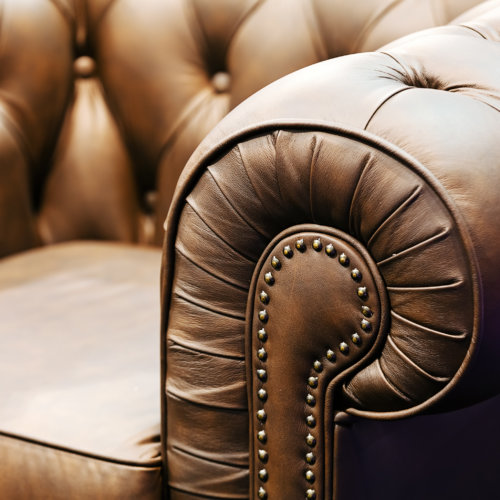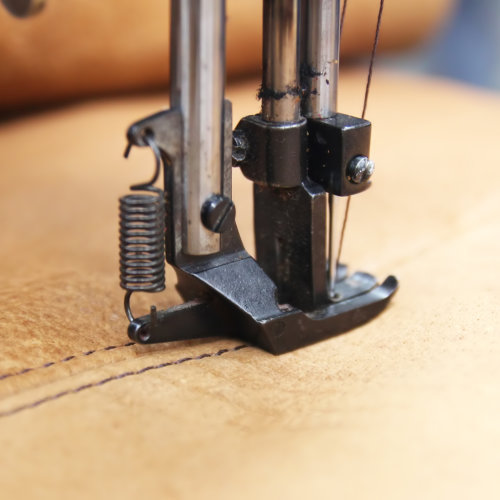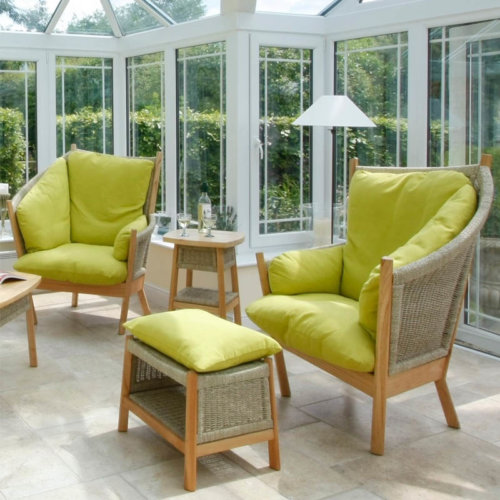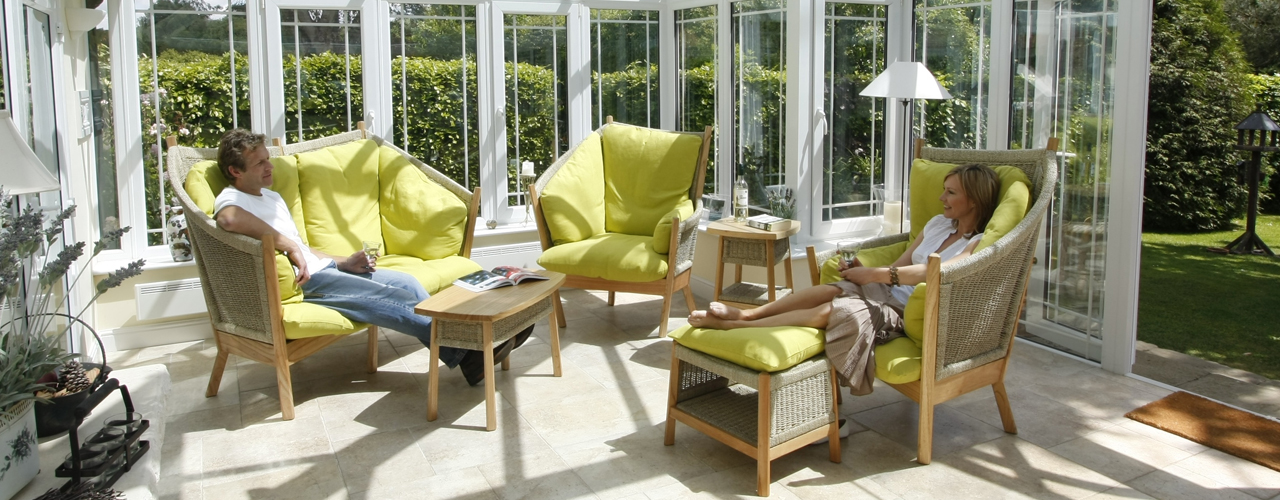Leather or Rattan Conservatory Furniture
The owners of The Fair Trade Furniture Company have a long standing connection to Fair Trade and established the idea of Fair Trade Furniture as a way of bringing Fair Trade into another sector of consumerism.
Take a seat with us as we explore the differences and decide which is more popular: Leather or Rattan Conservatory Furniture?
How is Rattan Furniture Made?
At The Fair Trade Furniture Company we have partnered with producers on the Indonesian island Java. From this Fair Trade connection we maintain a steady production of sustainably sourced rattan, seagrass and banana fibre. With these materials, our highly talented producers construct beautifully crafted rattan furniture. We’re asking the question which is more popular: Leather or Rattan conservatory furniture, but in order to find the answer we need to know more about each type of furniture and why they are favoured.
Rattan is a frequently chosen material for conservatory and outdoor furniture, but why?
The versatile nature of rattan means it can be used to build sturdy long lasting structures for furniture. Rattan is a type of climbing palm known for its flexibility and durability, making it an excellent material for our fair trade furniture production. Skilled workers in Java use our environmentally responsible practices to ensure safe harvest rattan stems from the plantations or forests. The outer skin is removed, leaving the core, which is what’s used to create the furniture. The rattan is then cleaned, dried, and treated to ensure it is free from pests and mould.
The dried and treated rattan is woven by hand into various furniture pieces. The weaving process requires craftsmanship and expertise to create intricate patterns and designs. Furniture items like chairs, tables, and baskets are commonly made using this traditional technique.
For larger furniture like chairs and sofas, our producers craft sturdy and sustainable frames using rattan poles. The rattan or seagrass weaving is then attached to this frame, ensuring a strong and durable piece of furniture.


How Is Leather Furniture Made?
Leather furniture has been a popular choice for centuries, valued for its durability, luxurious appearance, and comfort. Making leather furniture involves several stages, from raw material collection to the final product, but it is essential to consider the environmental impact associated with this manufacturing process.
It’s important to note that different manufacturers may have their variations in the leather furniture production process. The primary raw material for leather furniture is animal hides, usually sourced from cattle, sheep, goats, or pigs. These hides are obtained from the meat industry, ensuring that the animal’s byproducts are utilised to minimise waste. Once the hides are collected, they undergo a series of preliminary steps to remove flesh, fat, and hair. This process is known as curing.
Tanning is the critical step that transforms raw hides into leather. The goal is to stabilise the collagen fibres in the hide to prevent it from decomposing and to provide it with desirable properties such as softness and durability. There are two main methods of tanning: traditional tanning using chromium salts and vegetable tanning using plant-based extracts.
After tanning, the leather is usually dyed to achieve the desired colour. Various chemical and natural dyes are used for this purpose. Next, the leather is treated with finishes to enhance its appearance and durability.
Different types of finishes, such as aniline, semi-aniline, or pigmented finishes, result in varying levels of surface texture and protection. Once the leather is ready, it is cut into pattern pieces based on the furniture design. Skilled artisans then sew these pieces together using heavy-duty threads and techniques specific to leatherwork.
The Environmental Effect of Using Leather?
While leather furniture remains a sought after choice for many, it is crucial to be aware of the environmental impact of its production. Implementing sustainable practices, seeking eco-friendly alternatives, and supporting companies that prioritise environmental responsibility can help reduce the effects associated with leather furniture manufacturing.
Raising livestock for leather production has significant environmental consequences, including deforestation for grazing land, greenhouse gas emissions from livestock, and water pollution from animal waste. Traditional tanning methods use harsh chemicals, such as chromium salts, which can be toxic to both human health and the environment. Improper disposal of tannery waste can contaminate water sources, soil, and surrounding ecosystems.
To produce leather, tanneries also require significant amounts of water. This can lead to water scarcity and depletion of water resources in areas where tanning facilities are concentrated. Additionally, the leather industry contributes to air pollution due to the release of volatile organic compounds during the tanning process.
To make more eco conscious choices, consumers can opt for furniture made from alternative materials such as recycled leather, plant-based materials, or synthetic leather, which reduces the need for animal farming and lowers the environmental footprint.


Choosing The Fair Trade Furniture Company Way
It’s important to remember that while fair trade rattan offers several environmental benefits, no industry is entirely without impact. Sustainable practices are continually evolving, and our company always strives to further improve our environmental efforts. As a consumer, supporting fair trade rattan and other eco-friendly products we create at The Fair Trade Furniture Company can contribute to positive change and encourage more sustainable practices in the furniture industry.
By sourcing rattan responsibly, The Fair Trade Company contributes to reducing deforestation. Our sustainable rattan harvesting practices prevent the destruction of natural habitats and the loss of biodiversity.
Rattan plants are known for their ability to sequester carbon dioxide from the atmosphere. Sustainable rattan management and forest conservation efforts in fair trade practices help in carbon capture and contribute to mitigating climate change.
The Fair trade Furniture Company aims to minimise their carbon footprint throughout the entire supply chain, including transportation and distribution. This commitment to environmental responsibility helps reduce greenhouse gas emissions associated with the production and delivery of our rattan furniture.
We work closely with local communities in Java and raise awareness about the importance of preserving the environment and natural resources. This helps foster a culture of conservation and sustainability.
Conservatory Furniture from Fair Trade Furniture
Ready to invest in new furniture for your conservatory, summerhouse or garden room? Choose Fair Trade Furniture for the comfiest, most stylish and sustainable furniture around. You can see how we compare to other brands, and we how you get the best of all worlds when you make the commitment to our products and Fair Trade lifestyle.
Browse our online shop and explore our website to learn more about us. Take a look at some of our retail partners across the UK to see if there is a store or garden centre near you. Alternatively, if you’re local to Dorset, you can visit our stunning showroom to meet our team and see and try the furniture for yourself. Sitting is believing – until then, you won’t believe how comfortable our furniture is! Come and see for yourself.

